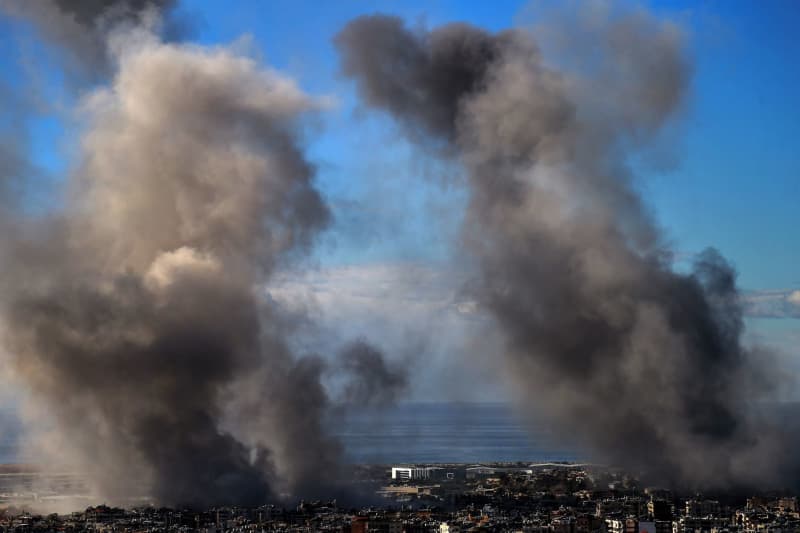Israel’s air force has executed a series of significant airstrikes targeting the southern suburbs of Beirut, an area known for its strong association with the pro-Iranian Hezbollah movement. These attacks occur amidst rising tensions and the potential for a ceasefire aimed at winding down hostilities in Lebanon. The bombings have been notably intense, marking one of the most aggressive waves of strikes observed recently, as multiple air raids struck simultaneously across the Dahiyeh suburbs. The scale and impact of these operations generate a palpable atmosphere of fear and uncertainty among local residents.
As the airstrikes unfolded, the sounds of large explosions reverberated through the city, causing widespread panic. Eyewitness accounts described a chaotic scene where thick plumes of smoke billowed into the sky, and numerous areas within the suburbs were reported to be ablaze as a result of the attacks. The intensity of the bombardment highlights the strategic importance that Israel places on targeting Hezbollah’s capabilities and infrastructure within Lebanon, reinforcing its broader security objectives in the region.
The Israeli armed forces confirmed that their recent operations focused on striking “terror targets”; however, they refrained from providing detailed information about the specific locations or objectives of these attacks. This ambiguity suggests that Israel aims to maintain a level of operational secrecy while signaling its ongoing commitment to countering perceived threats from Hezbollah and associated groups in Lebanon. The strategic targeting appears to align with Israel’s policy of preemptively neutralizing threats posed by these militant organizations.
In conjunction with the airstrikes, the Israeli military had issued evacuation warnings for at least 20 designated sites within Beirut’s southern suburbs prior to the attacks. This forewarning indicates a calculated approach, as it seeks to minimize civilian casualties while still achieving military objectives. The decision to evacuate certain areas may stem from intelligence assessments regarding potential Hezbollah operations or high-value targets in these neighborhoods, underscoring the complexities of urban warfare in densely populated urban settings.
The backdrop of these escalated hostilities arrives at a critical juncture, as discussions surrounding a ceasefire become increasingly prevalent. The prospect of a ceasefire underscores the urgency faced by both military and civilian stakeholders, as further escalation could prolong suffering and destabilization in the region. Moreover, international diplomatic efforts may arise in response to the conflict, as global actors often seek to mediate peace and stabilize volatile regions to avoid broader implications for regional security.
Overall, the intensity of Israel’s airstrikes on Dahiyeh and the situation in Lebanon embodies a multifaceted conflict where military actions intersect with humanitarian concerns. The ongoing strikes, coupled with the looming prospect of a ceasefire, reflect the intricate dynamics at play in the region. The situation remains fluid, and the reactions from both Hezbollah and the Lebanese government, as well as international responses, will be critical in shaping the conflict’s trajectory in the coming days and potentially paving the way for a more stable peace.

